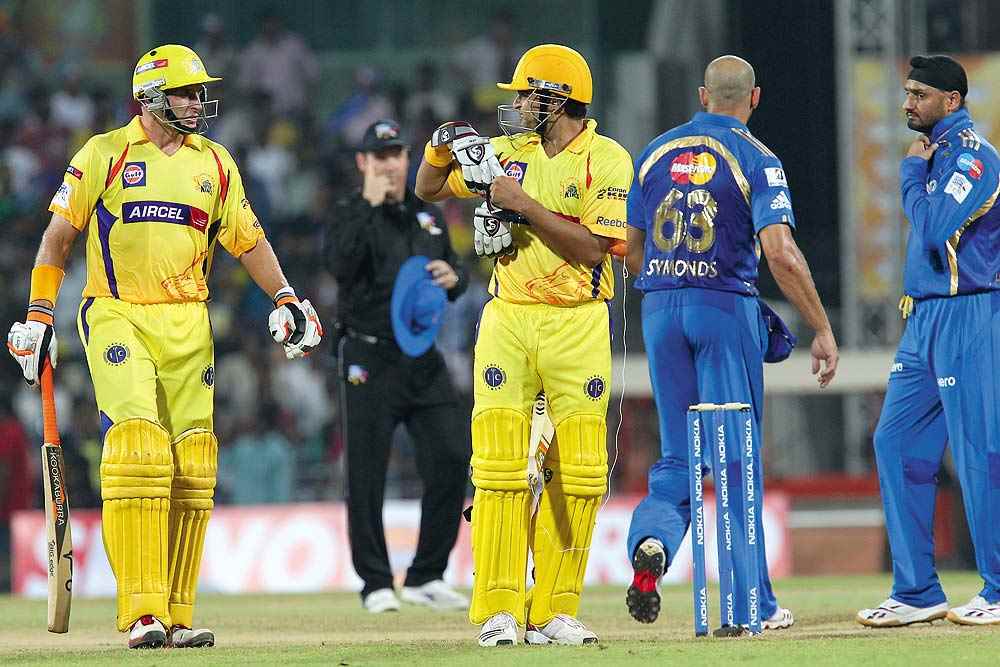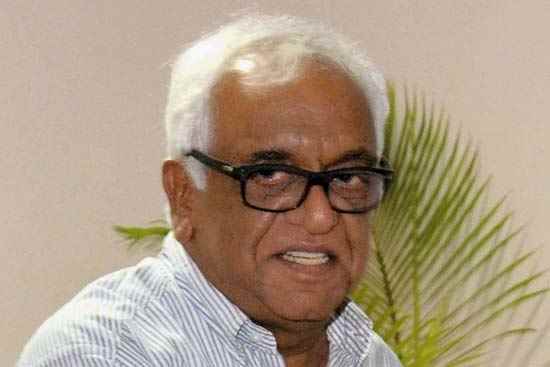IN NOVEMBER 2010, Anil Kumble, a legend of unquestioned personal integrity, retired from active cricket and got into cricket administration with the stated mission of bringing fairness, transparency and probity to the running of the sport. It transpired, however, that while serving as president of Karnataka’s state cricket association—putting him in a position to exercise control over players in the region—Kumble in his private capacity ran a player-management agency, and was thus also able to further the careers of players signed up with his firm.
When Kumble was asked about the conflicting interests inherent in this situation, this was his answer: “I don’t see any conflict of interest here … and I have to look after myself. At this stage of my career, I have to do that. Otherwise, you’d have to become like Gandhi and give up everything.” Implicit—no, explicit—in these words is a casual acceptance of self-interest and an equally casual dismissal of any motive beyond personal benefit.
Shortly after Ravi Savant, the president of the Mumbai Cricket Association, was selected as the BCCI’s new treasurer last month—replacing Ajay Shirke, who resigned in protest over the board’s handling of the Indian Premier League spot-fixing scandal—he dared to point out the obvious. “Dhoni,” Sawant said, “should immediately dissociate himself from the management firm while he is captain.” Sawant further suggested that the captain’s contract with the board be examined, and that Dhoni be given notice of conflict of interest.
Within minutes, literally, of Sawant’s statement hitting the headlines, the board hierarchy lined up in repudiation. “Ravi Sawant was speaking in his personal capacity,” was the explanatory chorus. Interim president Jagmohan Dalmiya stated that the board had “taken note” of the reports—about time, too, given that the media has been talking of this for over four years—and would “look into it”.
“But we are not going to hound someone,” Dalmiya added.
Dalmiya’s cautionary codicil had the undertow of personal experience. In December 2006, the BCCI’s executive committee met to consider a report charging him with corruption and misappropriation of funds dating back to the 1996 World Cup. N Srinivasan, then the board treasurer, prosecuted the case. Dalmiya appeared in his own defense but was, in the words of an administrator present at the time, “shredded” by Srinivasan.
The board voted 29–2 in favor of punitive action and, in an official statement, said that Dalmiya had been “expelled from the board for life” and “barred from holding any position in any organs of the BCCI, including state associations.”
“I am being hounded,” Dalmiya said then.
The story has an interesting coda. In June 2007, the Calcutta High Court lifted the suspension on the grounds that the BCCI had filed a false affidavit, misled the court, and committed perjury. The core issue was a BCCI claim that Dalmiya had been suspended under a specific clause in the constitution. However, no such clause existed at the time. It was post-facto written into the constitution, and the amendment had not even been officially ratified when Justice Indira Banerjee heard the case and tossed the suspension on the ground that it was “illegal”. (Of course, it was only the suspension that was overturned, not the facts relating to the misappropriation itself.)
Cut to the board’s annual report of 2010–2011. The BCCI treasurer MP Pandove began his presentation of accounts with these words: “I feel the figures, like facts, are stubborn in character. Accordingly, I would like to take all members with me through the figures, which speak a thousand words, without saying.” Tucked into his accounting at the very end, just this side of an afterthought, was a particularly interesting item: “Reversal of Amount Recoverable from Mr Jagmohan Dalmiya—PILCOM/INDCOM/World Cup 1996 (Refer Note 7(b) of Schedule 15): ₹ 466,416,703.”
When Dalmiya, after assuming the interim presidency, announced a programme of minor correctives that he dubbed “Operation Clean-Up”, here’s what was forgotten: the problem in cricket is not individual acts of corruption by a few naïve, greedy cricketers. Nor is it the casual acceptance of conflict of interest by otherwise upright men like Kumble and Dhoni. These are only symptoms of a far more invasive disease.
The problem is rooted in the fact that in the years since 1996, the BCCI perfected to a fine art the business of cricket, and brought unimaginable wealth into the sport, without any revision of operating procedures to guard against corruption. Thus means, opportunity, and the ability to rationalise aberrant behavior—the three classic elements of the fraud triangle—came together. And to this, the BCCI systematically added a fourth element as a safety net: over-arching political patronage.
THE PRESENCE OF POLITICIANS in the realm of cricket administration is not new. NKP Salve was board president from 1982 to 1985, while serving as minister in the Cabinet of then prime minister Indira Gandhi. A former club cricketer and first class umpire, Salve loved the game, so much so that Gandhi reportedly took him to task for spending more time on cricket than politics. “Madam,” Salve is said to have responded, “I am doing what I really love, and will gladly give up my Cabinet position to continue working for cricket.”
“The presence of politicians in cricket then was very necessary,” a senior administrator who made his bones during that time told me. “While the quality of Indian cricket was improving, there was absolutely no money in the sport. Politicians and public figures who were motivated by passion for the sport came in to try and save cricket from imminent bankruptcy.”
The turnaround began when Salve spearheaded the successful bid to bring the World Cup to India in 1987, and roped in Reliance Industries as sponsor. By 1996, when the BCCI led the bid to bring the World Cup to India, Pakistan and Sri Lanka, the board—under the leadership of Dalmiya and IS Bindra—had engineered a tectonic shift in the economics of Indian cricket. The Dalmiya-Bindra combine convinced ITC to come on board as title sponsors (it was known as “The Wills World Cup”) for a sum of approximately $10 million, they sold television rights for another $10 million, and monetised anything else their imagination could conceive. (Coca-Cola was “the official World Cup soft drink”.)
“Before the World Cup, politicians entered the game because there was no money,” the administrator quoted above said. “After the Cup, politicians entered the game because there was money.”
Until the mid 2000s, the grant given by the BCCI to state cricket associations was measured in lakhs. The lesser state bodies—the bottom feeders of the domestic competition, without a proper stadium and other facilities to their names—got between ₹ 15-25 lakh annually.
It was Lalit Kumar Modi who changed all that when, with the blessings of then BCCI president Sharad Pawar, he set out to monetise every aspect of cricket. It began in late 2005 when he signed up Nike as kit sponsor of the national team for a sum of $27.2 million, and reached its climax a year later when he sold television rights for the IPL to a Sony-World Sports Group consortium for $1.026 billion.
It was from that moment on that Indian cricket began valuing its worth in the billions—and as the money began to pour in, the BCCI brass put it to use to cement alliances, to buy silences.
So why are politicians so eager to run Indian cricket? Before we come to what happens to all that money, consider the case of Sharad Pawar, who does at least have some indirect affiliation with the sport—his late father-in-law Sadu Shinde was a Test cricketer of 1940s vintage. Before Pawar became president of the BCCI in 2005, his appearances in the national headlines usually involved famines, rising food prices, or farmer suicides. After 2005, he was transformed into cricket’s knight in shining armour—the man who saved the game from the clutches of the rapacious Dalmiya and who, through the IPL, gave the public a dazzling new circus where earlier he was vilified for not being able to provide bread.
Then there is Arun Jaitley, a politician with ambition but no base, who for 13 years and counting has ruled over the Delhi and Districts Cricket Association despite serial scandals; Narendra Modi, who saw in cricket another oppotunity to remake his image; Lalu Prasad Yadav, the doting father of a son with cricketing ambitions, who took over the Bihar Cricket Association and used his clout to get Tejaswi Prasad Yadav gigs with the India Under-19 team and then with the Delhi IPL team.
The list has only expanded in recent years, with one association after another anointing a politician at its head. (As you read this, Pawar is readying for a second stint as Mumbai Cricket Association chief. Ask yourself why he would want a regional post after having headed both Indian and world cricket.)
For starters, the annual grant to state associations, first raised to ₹ 8 crore (₹ 80 million) when Pawar took control, was more than doubled before the end of his tenure. From then on, you could run a state association with no major cricketing or talent-development activities or even infrastructure to speak of, and you would still get close to ₹ 20 crore (₹ 200 million) every year, regular as clockwork—without the burden of having to strictly account for how you spent the money.
If your association is influential, if your vote is crucial to the continuance in power of the entrenched brass, then this minimum grant is mere pin money. The powerful associations are allotted marquee games, and paid substantial sums for hosting them. The corresponding stick, that these games could not be allotted, is sufficient to bring recalcitrant associations into line. When Dalmiya’s fate was being decided in 2006, this implicit threat was enough to prompt even his own protégée Ranbir Singh Mahendra, who defeated Sharad Pawar in the board presidential elections in 2005, into voting against Dalmiya.
Associations also get to apply for ‘special grants’ that are routinely sanctioned; a particular favorite has been “stadium development”. Thus, if you control a state association and you play by the rules, you can run the tab as high as ₹ 60 crore (₹ 600 million) in a year.
These sums are not accounted for individually in the board’s annual reports, but bucketed under opaque and vague line entries such as “cricket development activities” and “establishment expenses”. Nor is this spending detailed in the reports of state cricket associations—in part because most don’t even file annual reports. Without itemised and detailed accounting, once the money is doled out to the states, there is no way for anyone to keep track of what happens to it, which may be exactly the point: by giving out such large sums with little or no oversight, the BCCI is tacitly buying the cooperation of the state associations. The state associations are effectively shielded from scrutiny—and in the unlikely event of a zealous governmental department poking its official nose into the finances, the board has sufficient political clout to ensure that such inquiries die still-born.
Instances abound. I’ll pick a lesser-known one as exemplar of how deep the rot extends.
Oh, by the way—this grant, in two tranches of 5.71 and 9.59 acres, was first made in 1992. In February 1996, Prime Minister PV Narasimha Rao, who also held the defence portfolio, annulled this agreement with an official order, though no one acted to reclaim the land. Almost 17 years later, the defence ministry is still trying to figure out how the HCA held on to it all these years.
See what political patronage can do?
Thus a Kumble, of unimpeachable personal character, can see nothing wrong in a clear conflict of interest; MS Dhoni, otherwise a young man of spine and integrity, sees a business opportunity in his elevation to the post of national cricket captain. The BCCI’s ultimate achievement is the creation of an environment no one can enter without being subsumed by the pervasive stench of corruption.


